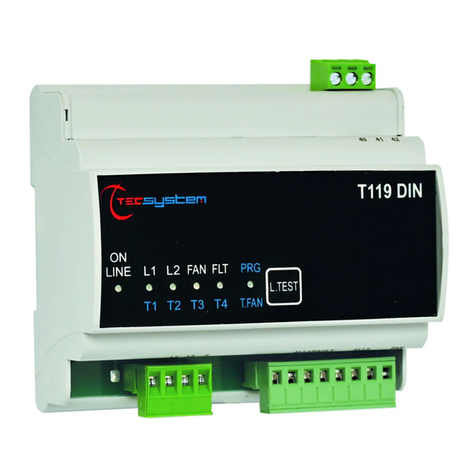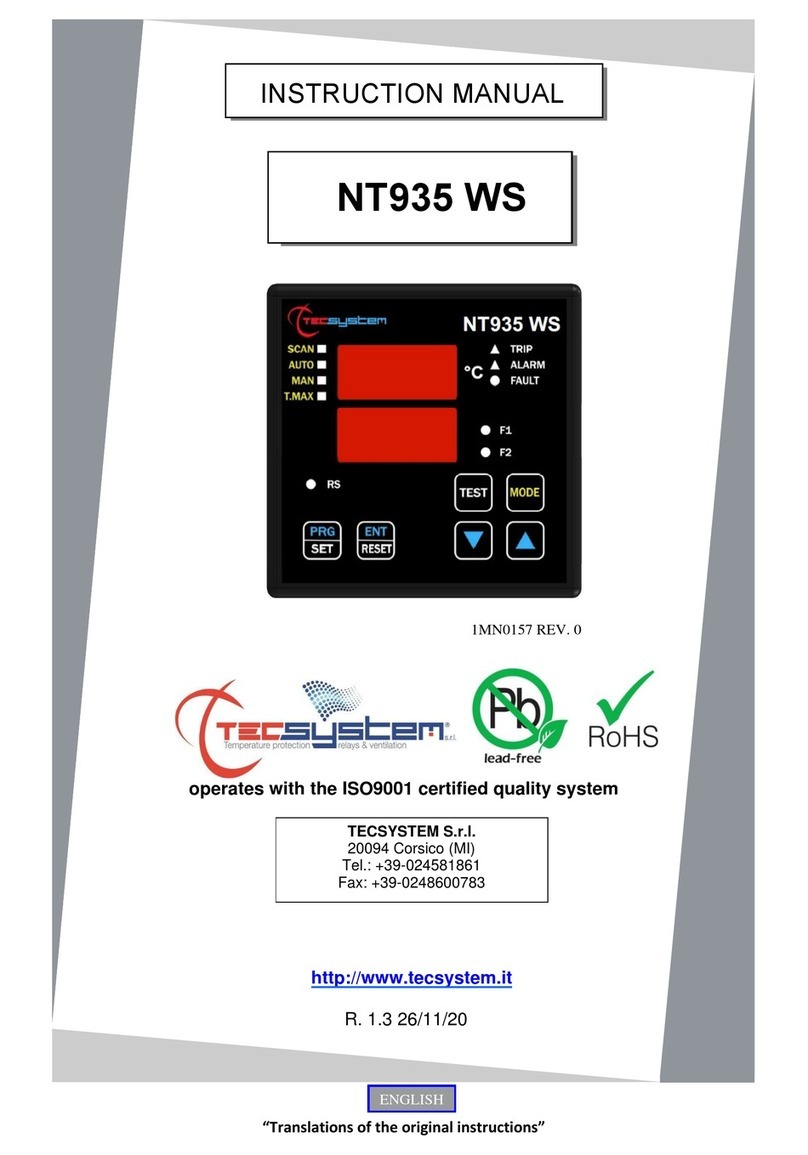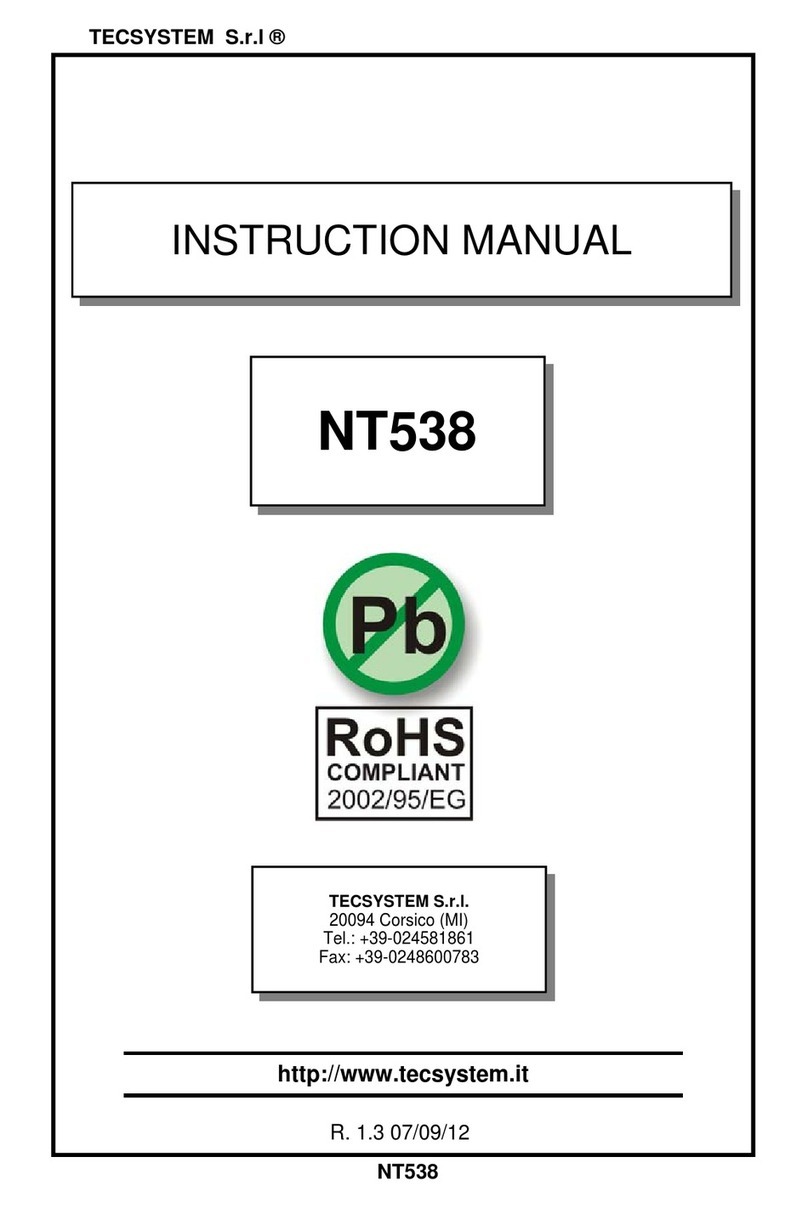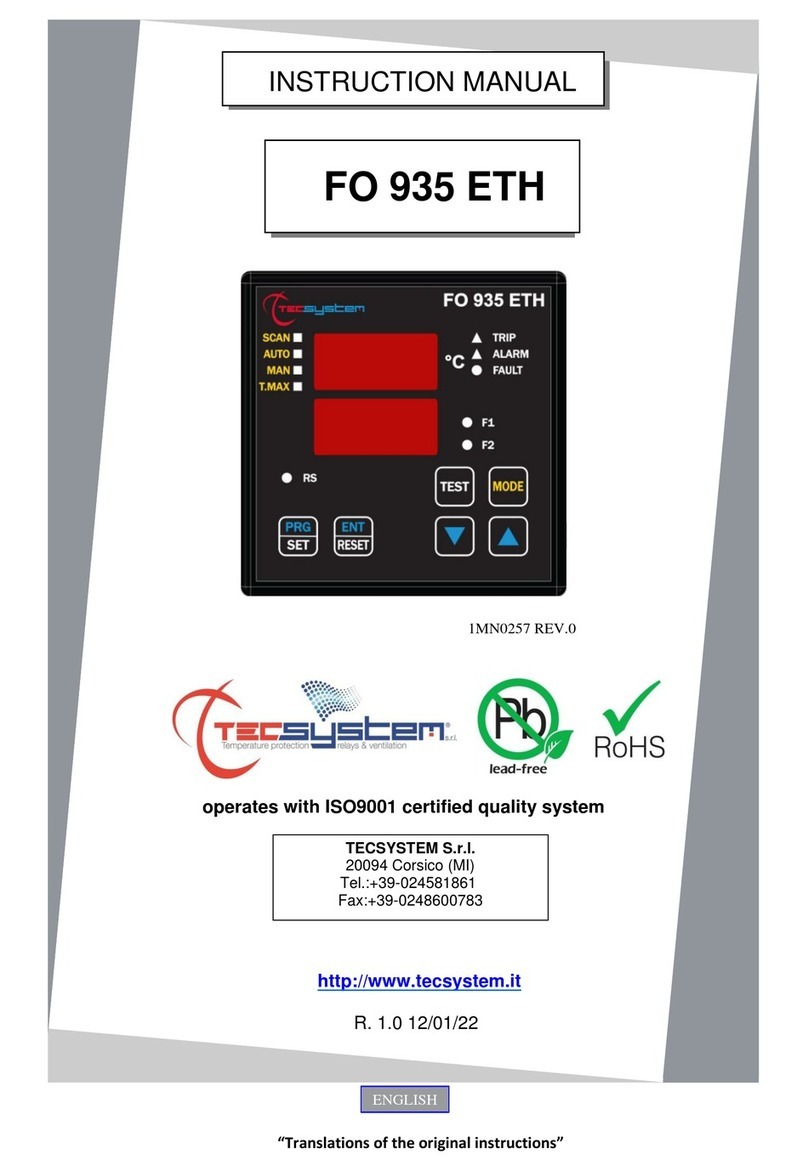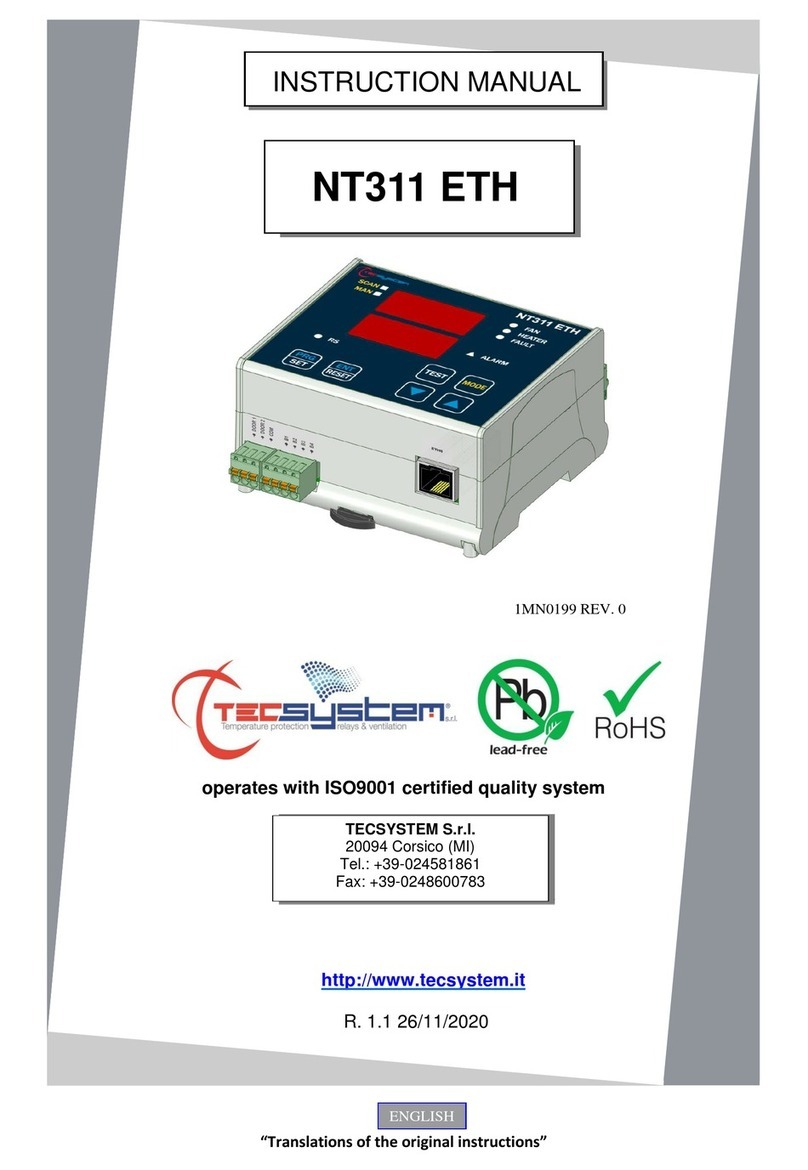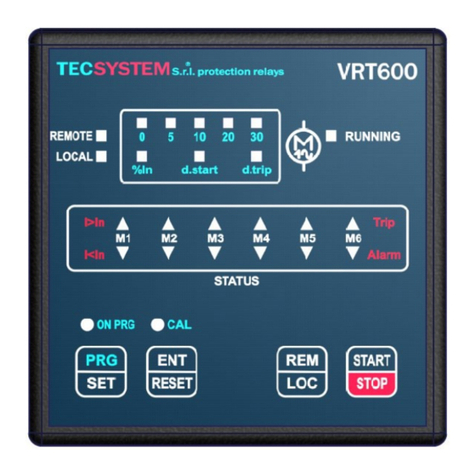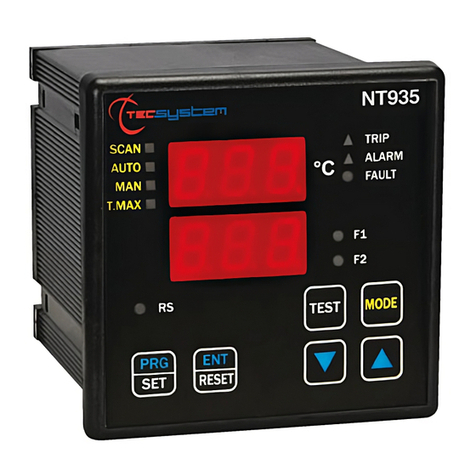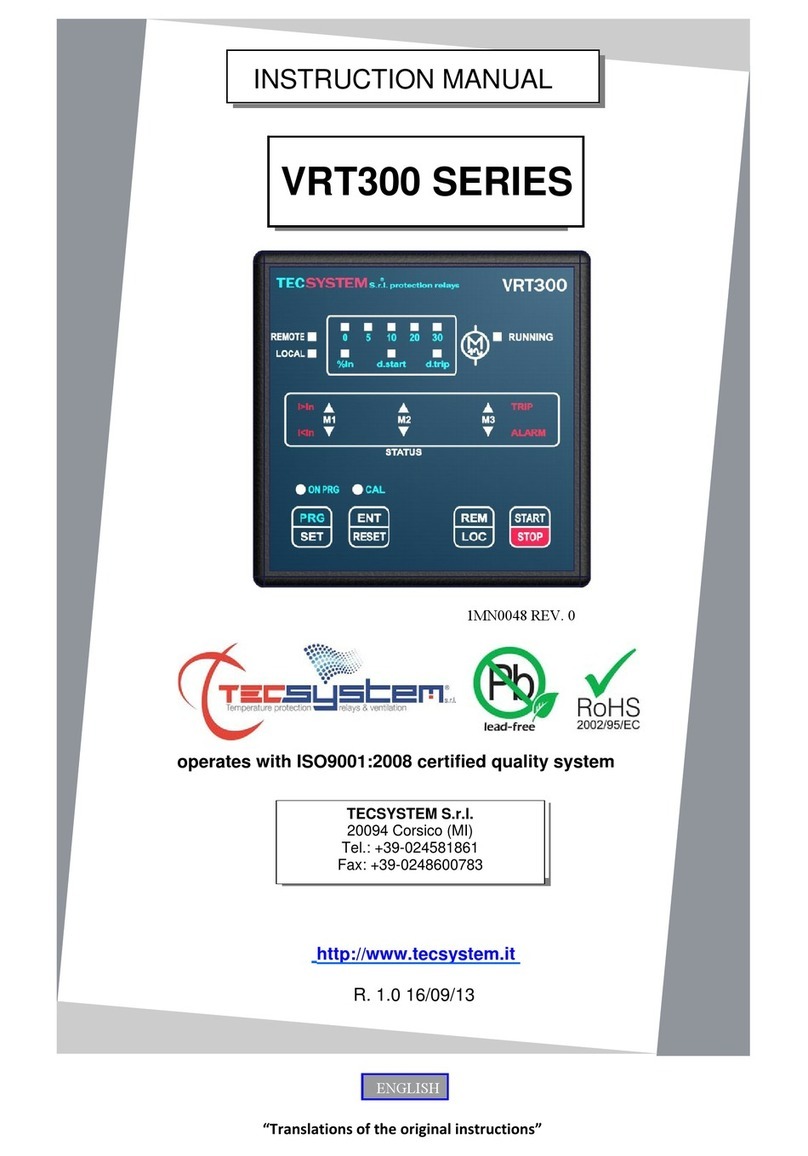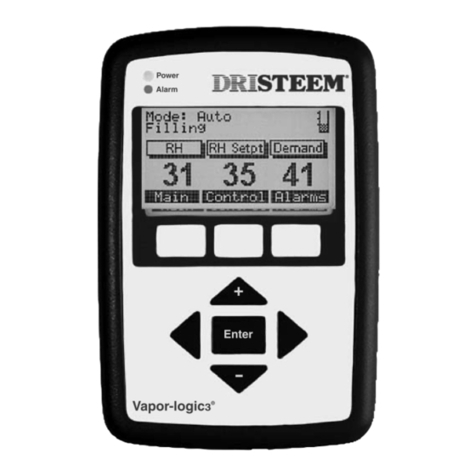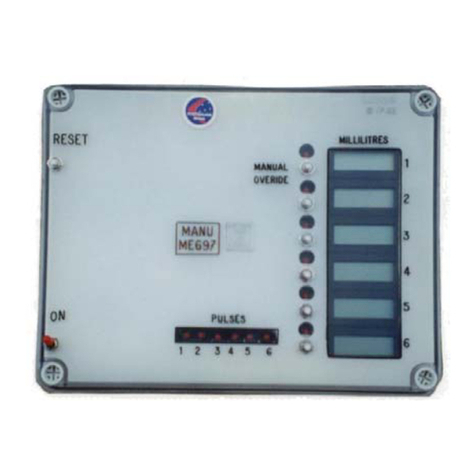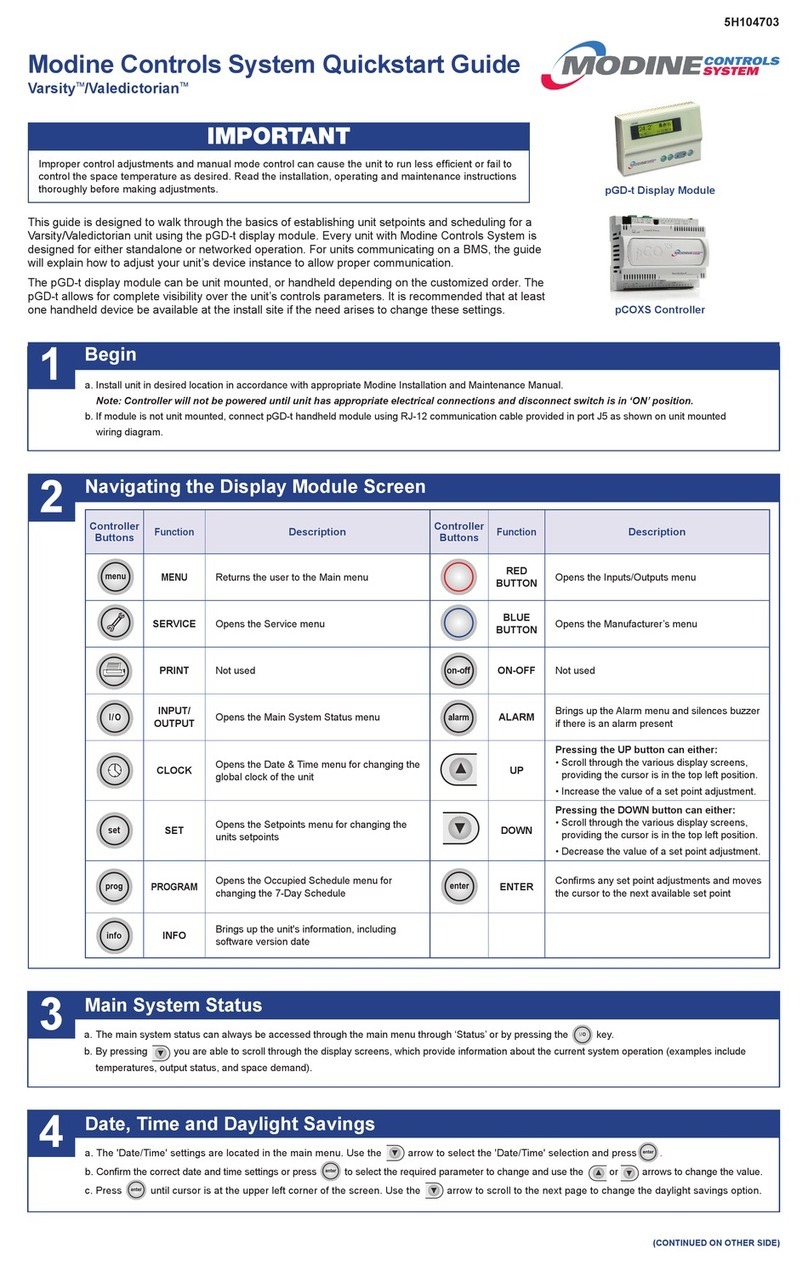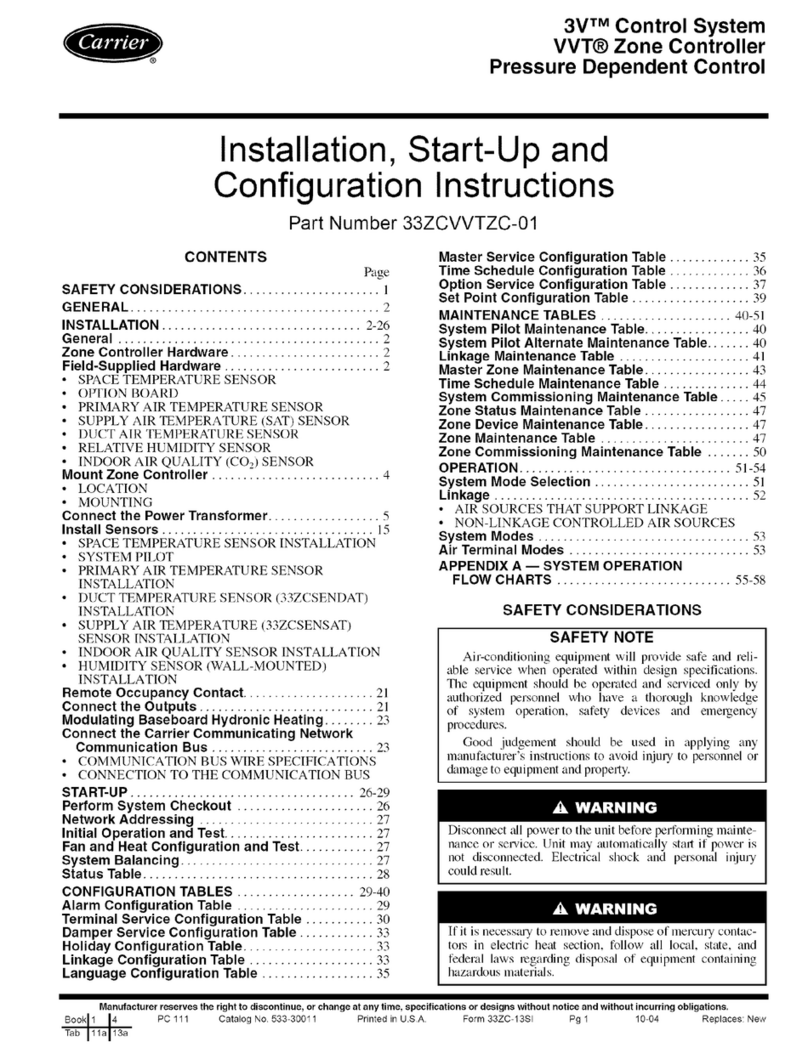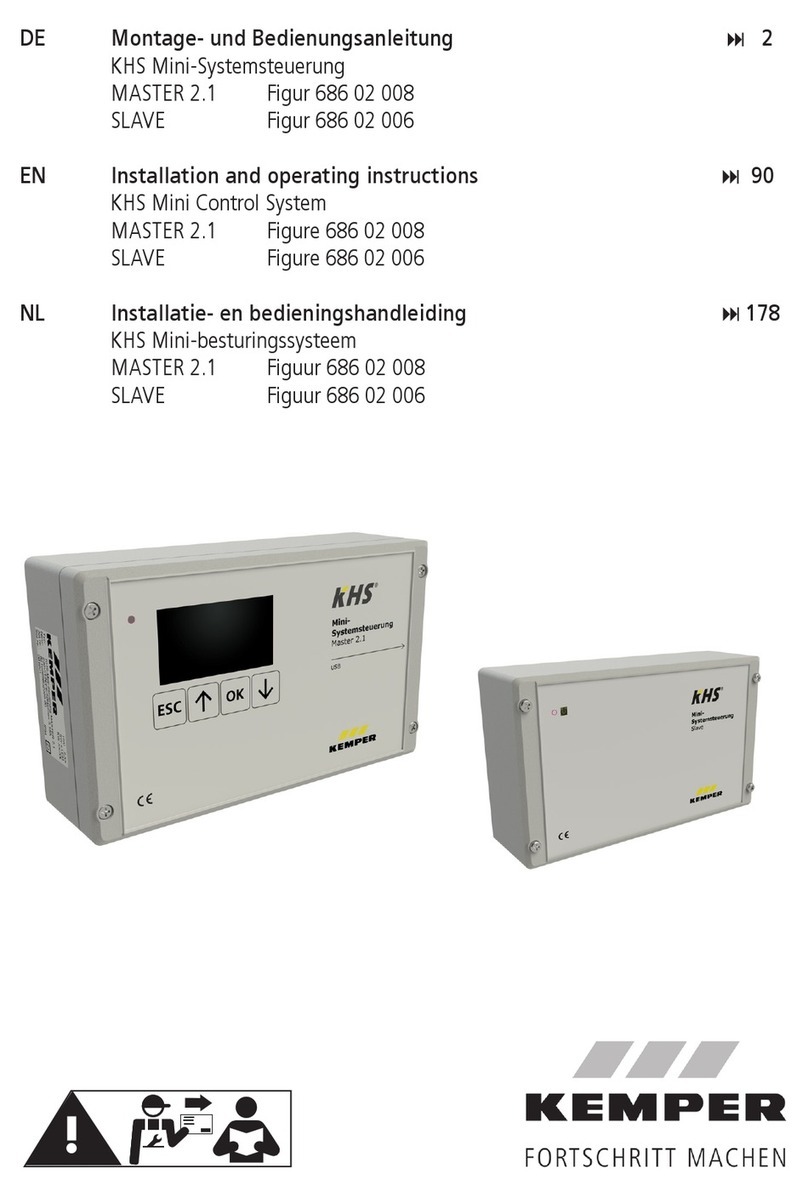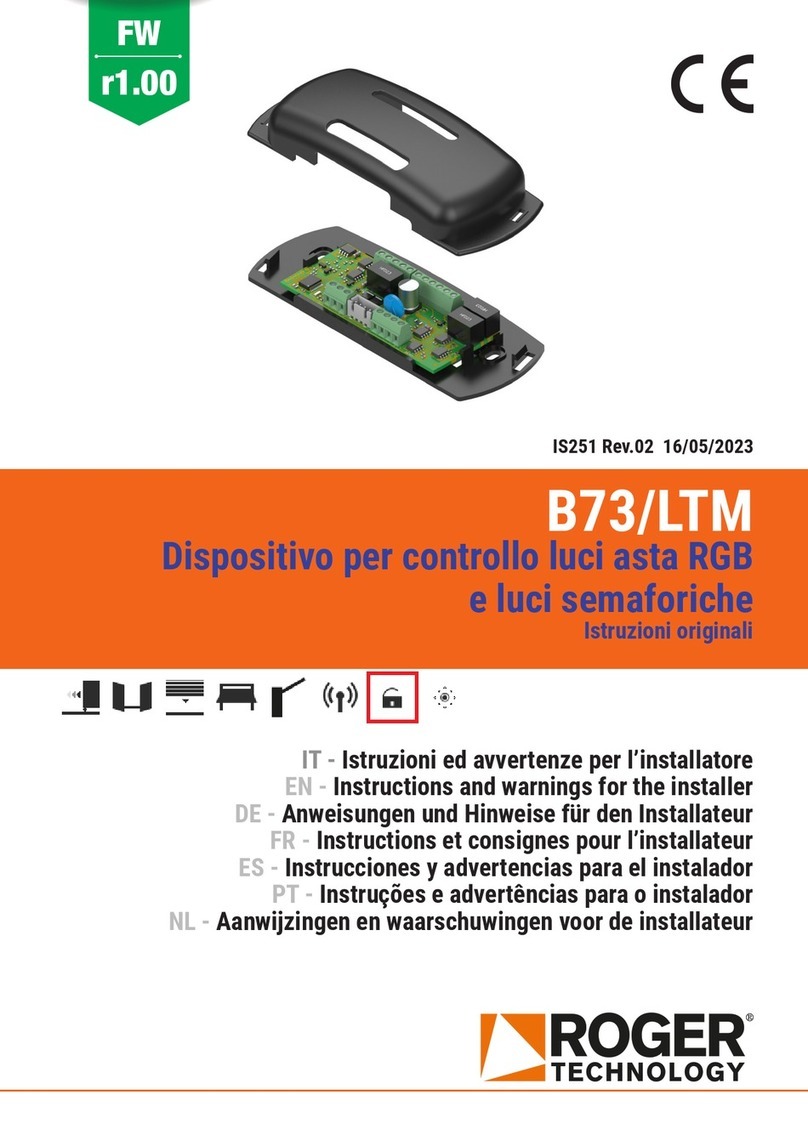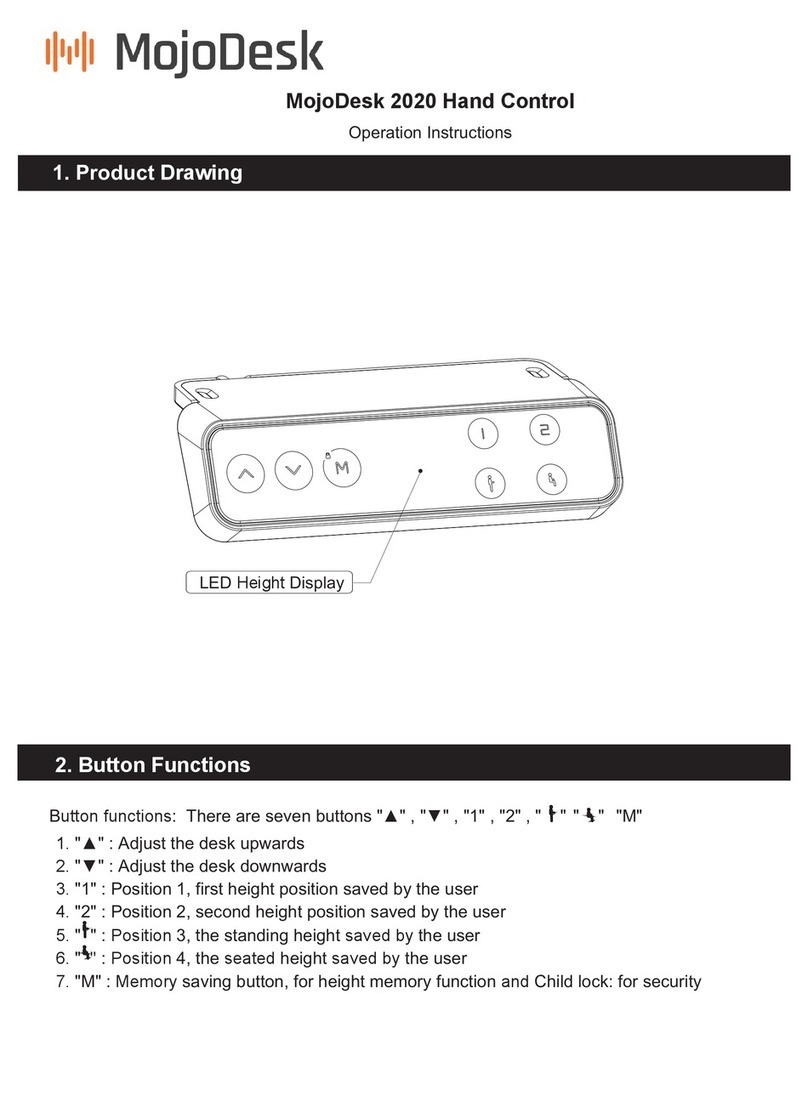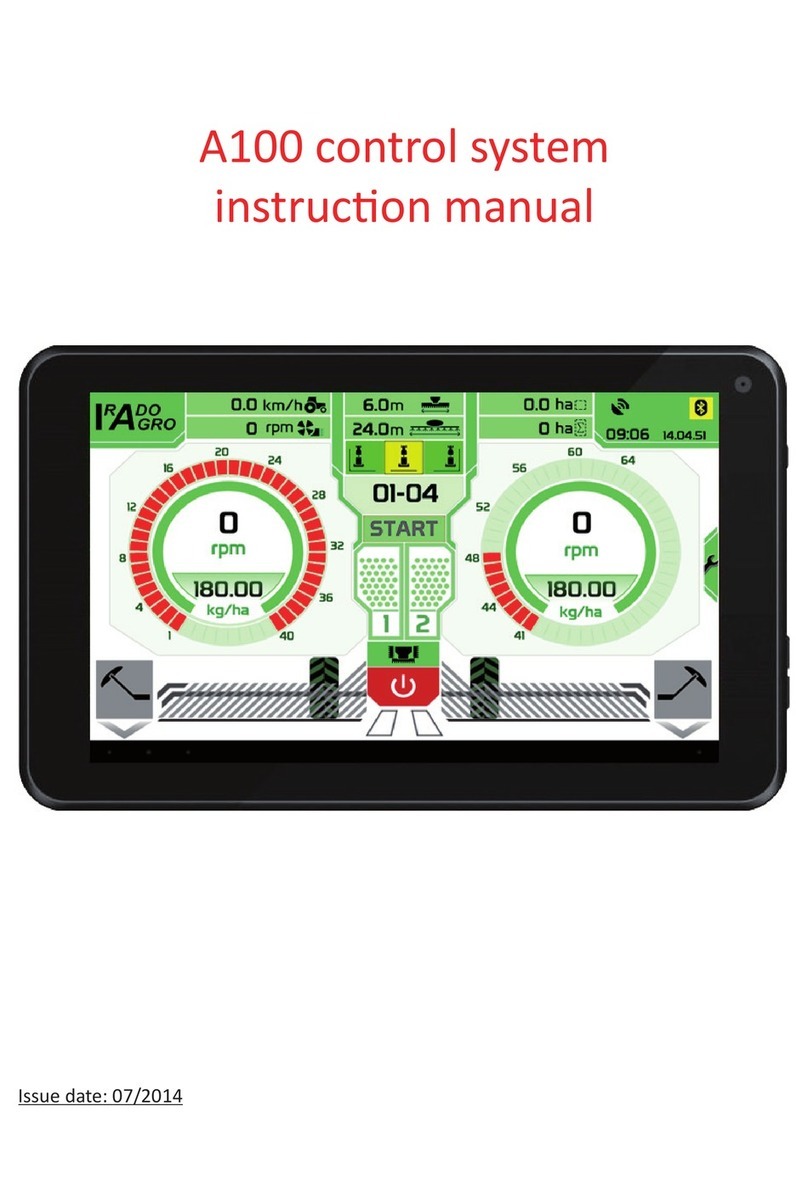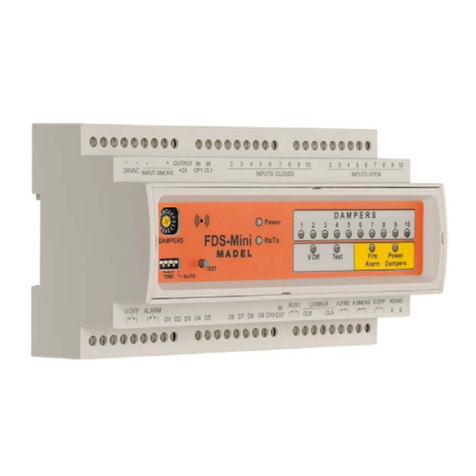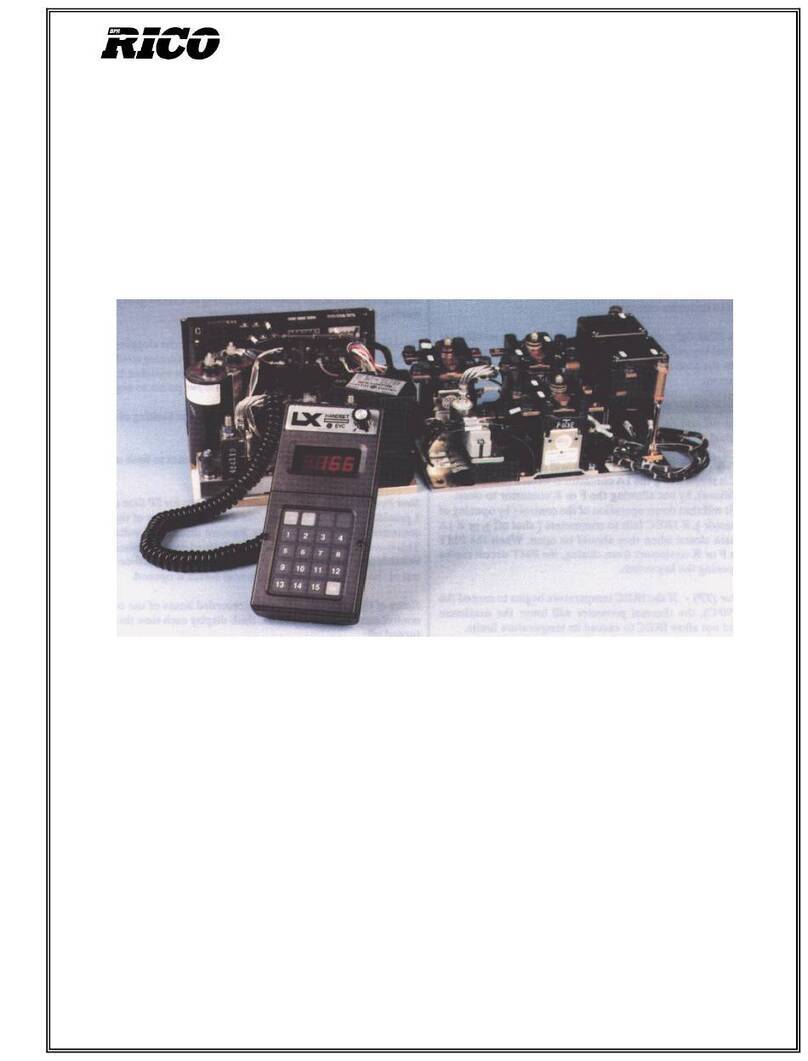
16 T119
TECSYSTEM S.r.l ®
Selbstdiagnose-Vorrichtung
Die neue Funktion erlaubt, die Diagnose der PTC-Sonden (Foc und Fcc) auszuschalten bzw. wieder einzuschalten.
Wie man die Diagnose ausschaltet: versorgen Sie das Gerät mit Energie, indem Sie die L.TEST-Taste gedrückt halten, und halten Sie
sie gedrückt, bis nur das FAULT-LED leuchtet. Bei ausgeschalteter Diagnose wird das gelbe FAULT-LED ständig leuchten.
Wie man die Diagnose wieder einschaltet: versorgen Sie das Gerät mit Energie, indem Sie die L.TEST-Taste gedrückt halten, halten
Sie sie gedrückt, bis alle LEDs erlöschen. Bei eingeschalteter Diagnose wird der gelbe FAULT-LED ausgeschaltet sein, der im Falle der
Sensorenstorung blinken wird. Die zentralen T119 werden mit EINGESCHALTETER Diagnose geliefert werden.
3) DEFEKTDIAGNOSE AN DEN PTC-SONDEN
Hat eine der PTC einen Kurzschluß bzw. ist unterbrochen, werden die folgenden Anzeigen gegeben:
PTC Alarm ALL1 das FAULT-LED + ALL1 blinken
PTC TRIP Auslöse ALL2 das FAULT-LED + ALL2 blinken
PTC FAN FAN das FAULT-LED + FAN blinken
Sollte sich eine PTC-Reihe unterbrechen, wenn ihr gesamter Widerstand die TRIP-Schwelle überschritten hat, dann wird der Defekt nicht
angezeigt.
4) ARBEITSWEISE DES ALARMRELAIS 1 UND ALARMRELAIS 2
Das L1-Relais funktioniert in der Normalität wenn die Zentrale mit Energie versorgt wird, d.h. der Kontakt N.O. (normalerweise offener
Kontakt) geschlossen ist. Im Falle eines Alarms an der PTC von L1 bzw. eines Defektes der Zentrale, fällt das Relais ab, also wird der
N.C.-Kontakt (normalerweise geschlossener Kontakt) geschlossen.
Das L1-Relais teilt außerdem die Funktion von FAULT an den PTC-Sonden; das Ansprechen dieses Relais bei gleichzeitigem BLINKEN
von dem LED von FAULT an den PTC-Sonden weist auf einen Ablesefehler einer PTC-Sonde hin, den man durch das Blinken eines
zweiten, dem FAULT-Kanal entsprechenden LEDs identifizieren kann. Das ALL2 –Relais bleibt in der Normalität unerregt und erregt sich
im Falle eines Alarms an der PTC von L2.
5) ARBEITSWEISE DES FAN-RELAIS (LÜFTUNG)
In der Programmierungsphase ist es möglich, eine Lüftungszeit einzugeben bzw. Die FAN-Funktion auszuschalten. Ist FAN ausgeschal-
tet, dann erregt sich das Relais nicht, und auch die entsprechende PTC kann bei der Montage ausgelassen werden. Ist dagegen FAN
eingegeben, erregt sich das Relais bei der ersten Anzeige der entsprechenden PTC, und das FAN-LED leuchtet ständig: das Relais
bleibt die ganze Zeit aktiviert, während der die PTC die Rückkehr zur Normalität der Temperatur erhebt; die T-119 hält während der gan-
zen in der Programmierungsphase eingegebenen Zeit das Relais aktiviert, und das FAN-LED blinkt. Liegt die Temperatur nach Ablauf
dieser Zeit in der Normaliät, dann fällt das Relais ab, und das LED erlöscht.
6)REGELN FÜR GARANTIE
Das gekaufte Produkt ist durch eine Garantie des Herstellers oder des Verkaufters gedeckt nach dem Bestimmungen und
Bedingungen der allgemeine Verkaufsbedingungen, verfügbar unter www.tecsystem.it und / oder Kaufvertrag festgelegt.
Die Garantie gilt nur, wenn das Gerät durch Ursachen beschädigt wird, die auf TECSYSTEMS.r.l. zurückzuführen sind,
wie Defekte der Produktion oder der benutze Komponenten.
Die Garantie gilt nicht im Falle falscher Handhabung, falsche Fühlerverbindung, Spannungsversorgungen über den maxi-
malen Betriebsgrenzen, keine Einhaltung der technischen Daten zur Verwendung und Montage, wie in dieser Bedienun-
gsanleitung beschrieben. Die Garantie übernimmt stets unsere Filiale in Corsico, wie bereits in die allgemeine Verkau-
fsbedingungen.
7) BITTE BEACHTEN SIE
Bevor Sie den Isolierungtest auf der elektrischen Schalttafel, auf der die Zentrale installiert ist, durchführen, schalten Sie die
von der Speiseleitung ab, um sie vor schweren Beschädigungen zu schützen.
Um die korrekte und sichere Arbeitsweise zu versichern, auf den Fall der Zentraleserneuerung muss man die Verbindun-
gensklemmen (Sensoren, Relais and Versorgung) ersetzen und die neuen ausgestatteten Klemmen benutzen. Das ist gültig,
wenn die Klemmen eine verschiedene Marke haben.
Wenn die Zentrale direkt von der Sekundärwicklung des zu schützenden Transformators versorgt wird, kann sie wegen Überspannun-
gen hoher Intensität Durchgebrennen. Solche Unannehmlichkeiten treten dann ein, wenn die Ladung bei ausgeschaltetem Hauptschal-
ter eingeschaltet wird.
Diese gilt vor allem dann, wenn die 220 Vac-Spannung direkt von den Schienen der Sekundärwicklung des Transformators aufgenom-
men wird und einen Phasenausgleichungsfestkondensator desselben Transformators vorhanden ist.
Zur allgemeinen Schutz der Zentrale ist die Verwendung der von TECSYSTEM S.r.l. ausdrücklich zu diesem Zweck hergestellten ein-
bze zweiphasigen elektronischen Entlader PT-73-220 empfehlenswert.
Als Alternative wird empfohlen, 24 VAC- oder noch besser 24VDC Spannungsversorgungen zu verwenden.
RAEE: Durch das Symbol der Zentrale weisen wir darauf hin, dass dieses Produkt als „ getrennte Műllabfuhr“ behandelt
werden darf. Der Benutzer muss den Műllabfuhrunternehmen die Verwerfungen oder dem Verkäufer nachher dem Erwerb
der neuen Zentrale zustellen.




















